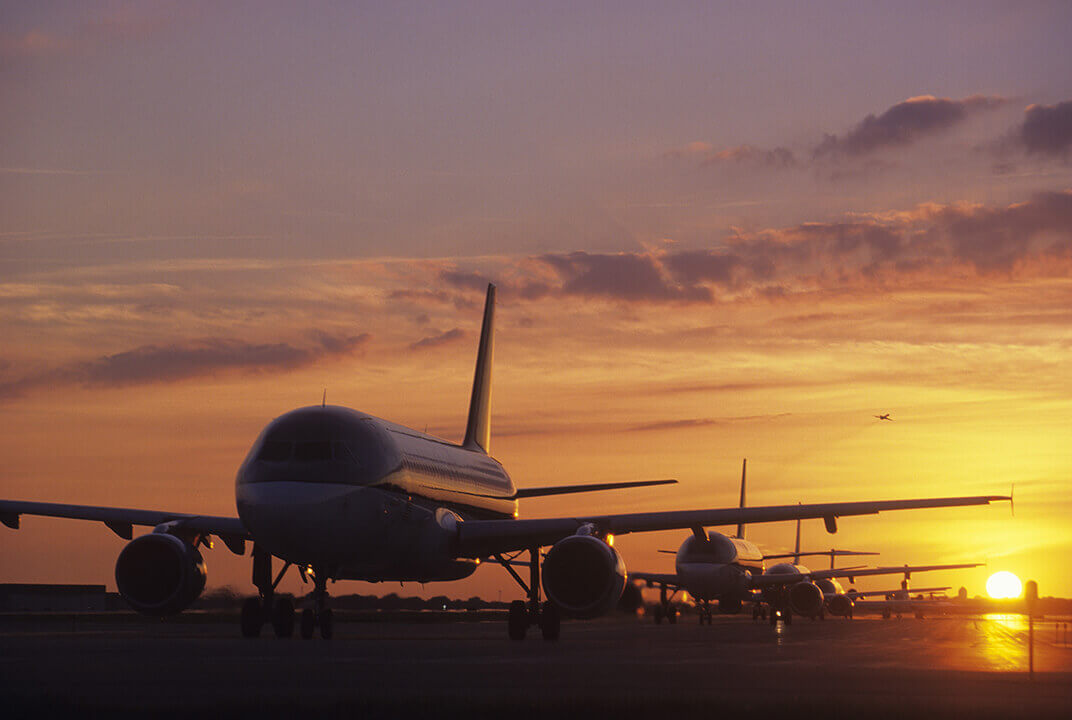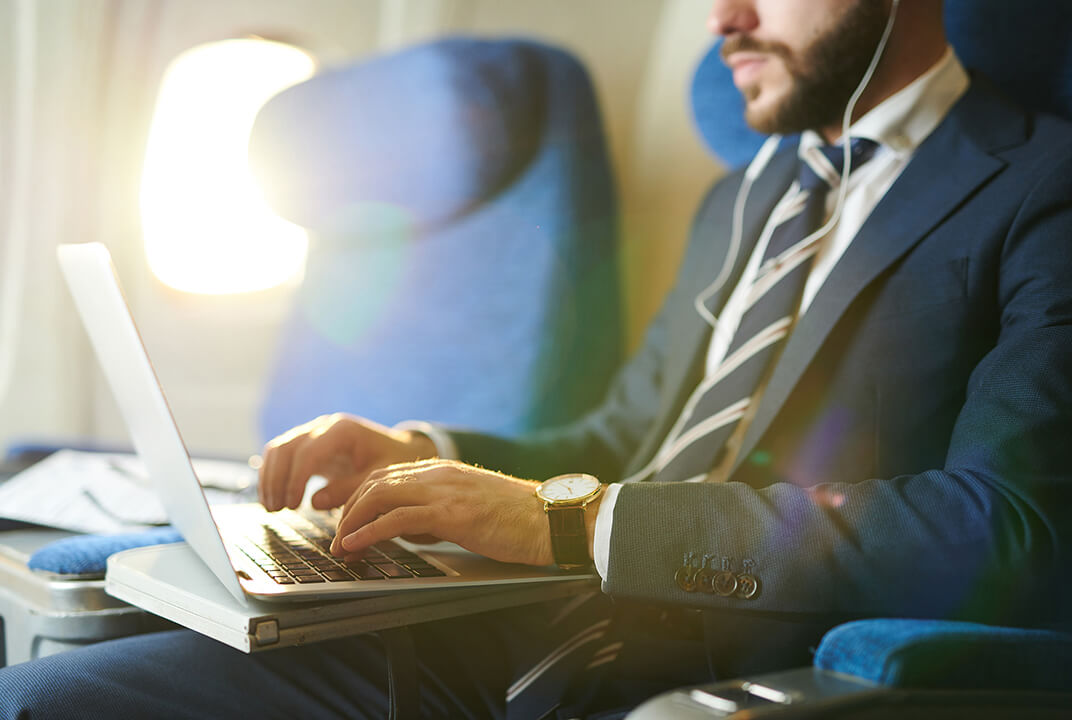Insight | The State of Aviation: uncertainty is now certain
The State of Aviation: uncertainty is now certain
Aviation
As COVID-19 continues to spread in many countries, but with some jurisdictions easing lockdowns, the aviation industry is at a crossroads. Airlines, including some of the world’s oldest and most beloved, are failing. Revenues are practically nil. Passengers are, in many cases, scared to return to airports and aircraft. Government assistance is helping some airlines run out the coronavirus clock, but the playing field isn’t level and, in a growing number of cases this assistance comes with complications.
Airlines are reacting in whatever way they can, pulling out seats from passenger aircraft to turn them into packet freighters, organising crew to help at makeshift relief hospitals, keeping vital links for urgent travel open.
What’s certain? Uncertainty, and the certainty that airlines will need to adapt to it to survive — and thrive — in the reshaped world. As just one example, nobody would have expected that 2020 might lead to Lufthansa Technik working on converting an Airbus A380 to carry parcels.
We can’t underestimate the scale of the current problems
The current numbers are sobering. IATA’s latest estimate expects a $314 billion shortfall in airline revenue for 2020, with little chance the industry will see profits until 2022 or even later. Some 10.5 million people employed at airports and by airlines are at risk, and 50 million jobs globally directly depend on the airlines and global aviation industry, the airline trade body says. A handful of airlines have already declared bankruptcy, entered administration, or taken similar options, with several halting operations completely. More are expected to follow given the lack of revenues into the summer, the end of government salary assistance schemes, and a need to plan for the future.
Cirium’s tracking of aircraft suggests more than half the global commercial aircraft fleet is grounded. As airlines prepare their recovery plans it is clear that many of these planes aren’t expected to ever carry passengers again, especially those aircraft that are older and less environmentally efficient, even in the face of historically low fuel pricing.
The COVID-19 crisis means an acceleration of existing trends in many ways, including the retirement of four-engined aircraft, perhaps most notably the A380. With the superjumbo heading into history faster than had been expected, capacity discipline is likely to be very much in effect during the recovery, and the implications for the prospects of the Boeing 777-9 in particular are not positive in the short to medium term.
The previous generation of twinjets without successors like Boeing’s 757 and 767 are also retiring more quickly than planned, and this will likely have impacts on the routes that are only practically operable with these aircraft at present. These routes were in many cases marginal before: long-and-thin markets in both the medium haul (like the US legacy carriers’ 757 transatlantic markets) and the long-haul (those markets where a larger, newer widebody is too much capacity).
There appears to be some consistency in the short-term, operational changes at play, where most passenger airlines have in essence either curtailed their operations entirely. A few (particularly the larger national carriers like Lufthansa) have been maintaining a skeleton fleet operational in conjunction with their governments, although some airlines are executing on different tactical changes to others.
Qatar Airways’ continuing global operations and willingness to perform repatriation flights stand out particularly, for example. So do the numerous cargo and packet-freight operations carried out by European low-cost carrier Wizz Air, largely bringing medical supplies from China into Europe. Even Chinese carriers such as China Southern, China Eastern, Shandong Airlines and Xiamen Airlines, supposedly buoyed by a return of travelers, are running all-cargo operations on their passenger aircraft. Other airlines across Europe and the Americas are also operating all-cargo flights as a short-term revenue source while awaiting a reopening of borders.
Overall, however, grounding the fleets was critical for the conservation of their monetary reserves, and most airlines did so promptly, notes industry veteran Christoph Mueller, former CEO of Malaysian Airlines and Aer Lingus. That’s in contrast to the post-9/11 era where many carriers continued to burn cash in an effort to be the last airline still operating, he noted.
But how the airlines resume operations — including what the new fleet and route mixes will consist of, how the stages of the restart progress, and the big spoiler of how the many regulators across multiple jurisdictions will implement public health measures — will necessarily vary. During the FlightPlan event Mueller recommended that airlines must each make their own decision on the proper course of action: “the travel restrictions are quite different per continent, per country. Every airline has a different mix of long haul and short haul aircraft. It depends on the fleet size and the mixture of the fleet which airplanes you will ground. It requires a case-by-case assessment.”
Reading the tea leaves of an early recovery
We’re still too early to tell definitively what recovery will look like. Indeed, we may only ever be able to see the shape of it in the 20:20 vision of hindsight. Aviation journalists John Walton and Seth Miller tackled the topic during FlightPlan, which can be viewed below.
Much of the industry is looking to short-haul travel for an initial rebound. Much of that has to do with regulatory challenges. Many borders remain closed, reducing international flight options. But domestic travel in China is returning, albeit slowly. An initial return-to-work boost led to a plateau. But optimism is high that promotions from the government and private sector will help boost the travel demand. Kazakh airline Air Astana, too, reports demand for internal flights. US carriers are seeing an uptick in demand as well, having bottomed out in mid-April.
Where travel has continued, personal and family-related travel have kept people flying more than business and that is likely to remain the case in the near term.
More broadly around the globe the story is similar. New Zealand is seeing demand slowly resume as the country has managed to keep infections at bay. Air New Zealand is poised to operate a 30% domestic schedule soon. And the country is negotiating with Australia on trans-Tasman flights resuming, allowing a joint “bubble” between the two countries as they keep the coronavirus at bay.
European carriers are similarly forecasting a resumption of service across the continent, though also at much lower rates than last year. The imposition of national quarantines and joint “bubbles”, such as for EU/EEA/UK arrivals into France, and French arrivals into the UK, will be positive in particular cases but the suddenness of government decisions like these will have a chilling effect on bringing aircraft back into readiness, not least given the need for expenditure on de-mothballing any aircraft well in advance of prospective revenues. Some airlines are likely to leave the risk — and any potential reward — to others, especially at the beginning.
Airlines operating must strike a balance between revenue and customer comfort on board. We know that social distancing cannot be reasonably implemented, but travelers want some sort of indication their safety is being considered. This effectively has become a battle over blocked middle seats and no-neighbour seating on board, with passengers demanding this visible sign of physical distancing and IATA (and others) suggesting it is an expensive and unhelpful boondoggle. It may, nonetheless, be necessary in order to reassure passengers.
Many questions remain, of course, not least over how physical distancing for, say, a family of three travelling can be implemented. The effects of this issue will be complex and unequal: airlines with aircraft that offer seating in groups of three will be able to maintain no-neighbour seating at a higher load factor than with seats in two or four. This may well prove disadvantageous to some airlines, and advantageous to others.
COVID-19 will accelerate trends in the passenger experience
In the immediate future the experience of flying during the height of the pandemic is proving to be quite different to usual.
Everything is being done to minimize interactions between travelers and employees. Digital solutions, already moving forward at pace, are more favored and a transition to touchless options is preferred. United Airlines is developing an option for printing bag tags at the airport without touching the kiosks. Airlines are hoping even more than they were that passengers will scan their own boarding passes, for example, rather than having an agent at the gate handle that task. Once on board the interaction remains limited, with minimal catering if any at all.
But these changes are not all here forever. The digital transition has a long-term value to airlines, particularly where it can be implemented without additional hardware purchasing. But adding self-boarding gates is less likely as the costs for those outweigh the benefits, particularly as airlines look to more tightly control the flow of passengers on to planes.
Concepts for blocking middle seats are being developed at a rapid clip. But those will also require a capital investment from the airlines. And with the expectation of blocked middles not lasting into 2021 such an investment is likely unwise — unless, of course, airlines are looking to alter their on-board service offering more broadly. What is a health-related shift today could be a new class of service for the future, particularly as corporate travel budgets look set to be tightened.
The retirement of older aircraft also means the retirement of older inflight products, and while that is often reason for passengers to rejoice, this time around it may also hasten the end of first class products on board, once again an acceleration of an existing trend.
But, in a cyclical way that is not uncommon in aviation’s history, that might not be all bad news, as the newest business class products replacing them on board offer a much improved experience compared to prior generations. We discussed this transition in depth during the FlightPlan segment found here.
The future will come, and the industry will be changed forever
Even in the dark of a long winter, there is the promise of spring, however far off it is. To Nick Careen, IATA’s SVP for Airport Passenger Cargo and Security, the pain is very real, but so is the opportunity for the industry. He cites a resilience that has developed in the past 5-10 years, allowing airlines to “sustain the punches being thrown at us.”
Careen believes in the potential to “come out stronger in the end so long as we take a disciplined approach to our restart.” But just what will that disciplined recovery look like?
It won’t — can’t — be business as usual for airlines or for anyone in the aviation industry. Flexibility will be key, but so will a need for goodwill from passengers and from their elected representatives in governments, and that may be a sticking point for an industry that has not always covered itself in glory when dealing openly, honestly and in good faith with passengers. That’s certainly one thing that will need to change.
But aviation will adapt, and it will respond. There will be new business models, new ways of working, new innovations for the short-term and medium-term, and new technologies to help along the way.
Aviation has a unique opportunity to reinvent itself — and that opportunity needs to be seized.


